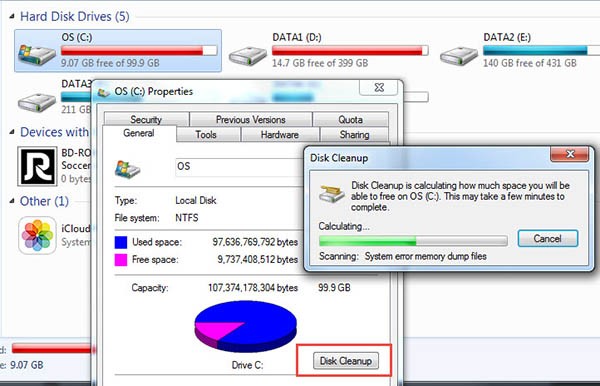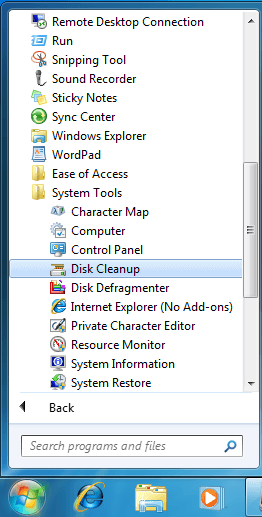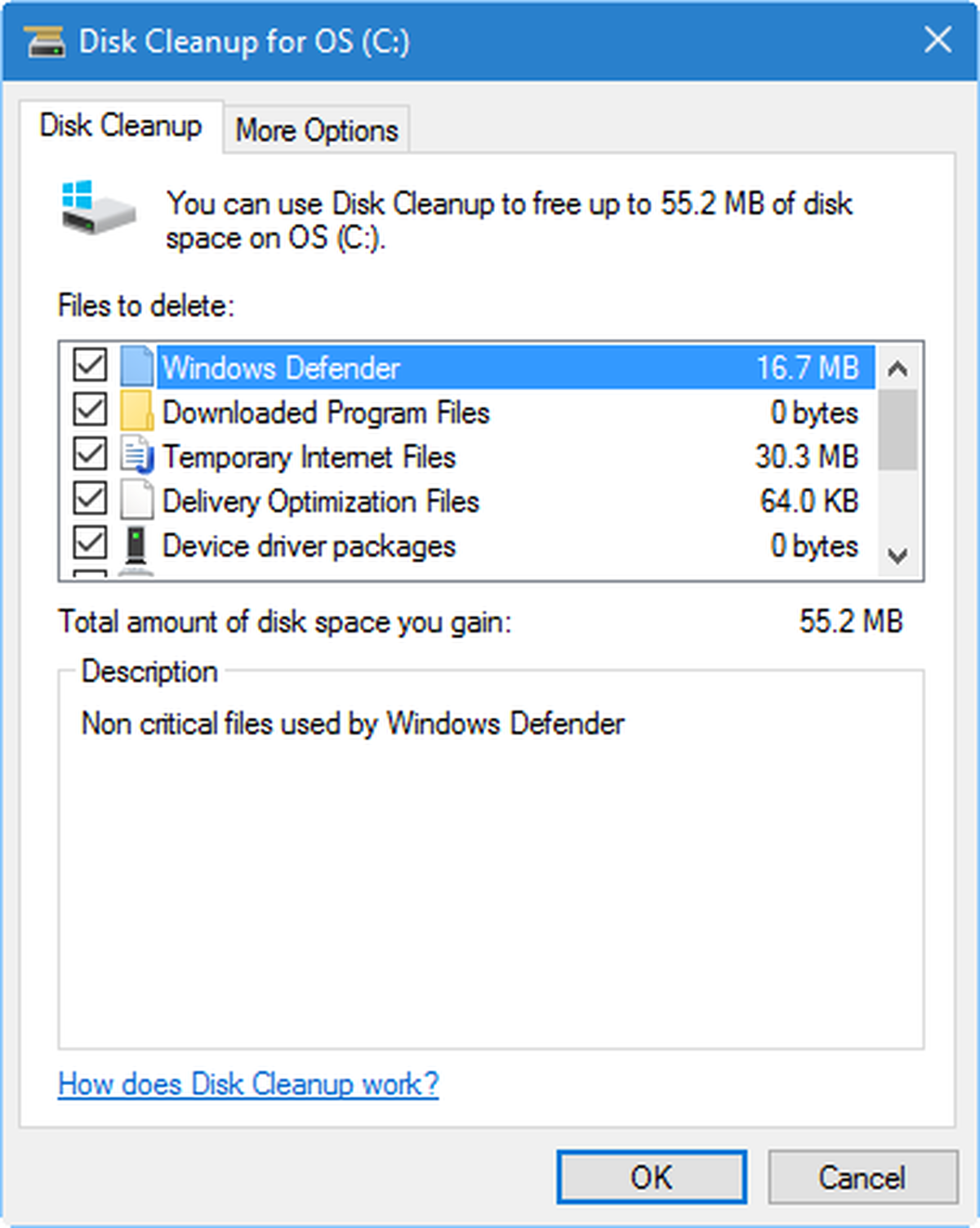

Disk Cleanup also lets you empty the Recycle Bin, delete temporary files, and delete thumbnails. Running Disk Cleanup at least once a month is an excellent maintenance task and frequency.Īs the image shows, Disk Cleanup can delete temporary Internet files (associated with Internet Explorer), downloaded program files, and offline webpages. Removing unnecessary files, including temporary files, helps speed up and improve the performance of the hard drive and computer.

It allows users to remove files that are no longer needed or that can be safely deleted. Select the appropriate drive and click OK.Disk Cleanup is a Microsoft software utility first introduced with Windows 98 and included in all subsequent releases of Windows. Once Disk Cleanup opens, the initial window will ask you which drive you want to clean up.Press Windows and R together on keyboard to open Run.Click on Programs > Accessories > System Tools > Disk Cleanup.

Click Windows icon on bottom left corner to open Start menu.There are 3 ways to launch Windows 7 Disk Cleanup utility. Disk Cleanup in Windows Server 2012 and Server 2008 (R2) are not enabled, so you need to install by yourself. Windows 7 Disk Cleanup is enabled by default, the GUI and steps are similar with other Windows versions.

Removing unnecessary junk files can help to speed up and improve the performance of the computer. There are a number of different file categories that Disk Cleanup can analyze and clear up. It allows users to remove the junk files that are no longer needed and can be deleted safely. About Windows 7 Disk Cleanup utilityĭisk Cleanup is a Microsoft built-in utility that first integrated with Windows 98 and included in all subsequent Windows versions. In this situation, Windows 7 has native Disk Cleanup utility to help you free up disk space. No matter you use Windows 7 laptop or desktop, use Solid-State Drive (SSD) or traditional mechanical hard disk, you'll encounter the problem that system C drive running out of space.


 0 kommentar(er)
0 kommentar(er)
